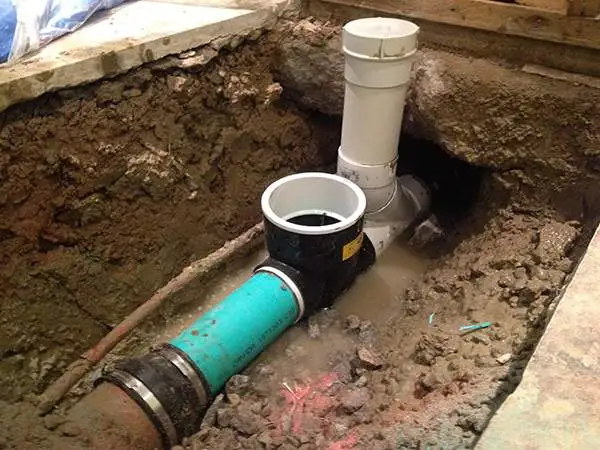Backwater Valves: Working Principles & Types – When there’s a sudden downpour, there’s a chance your basement will have a water backup problem. It’s terrible enough if pure rainfall backs up in your basement, but picture filthy sewage filling your cellar and destroying everything it comes into contact with. Fortunately, adding a backwater valve can help avoid this. In this post, we try to provide sufficient information on working principles and types of backwater valves.
What is A Backwater Valve?
A backwater valve is a device fitted in the drain line of flood-prone fixtures, such as toilets and sinks, that stops water from entering the home from the sewer or public system when there is a blockage upstream. The backwater valve is also known as the backflow valve or the sewer backup valve when it is used in sewage backup systems.
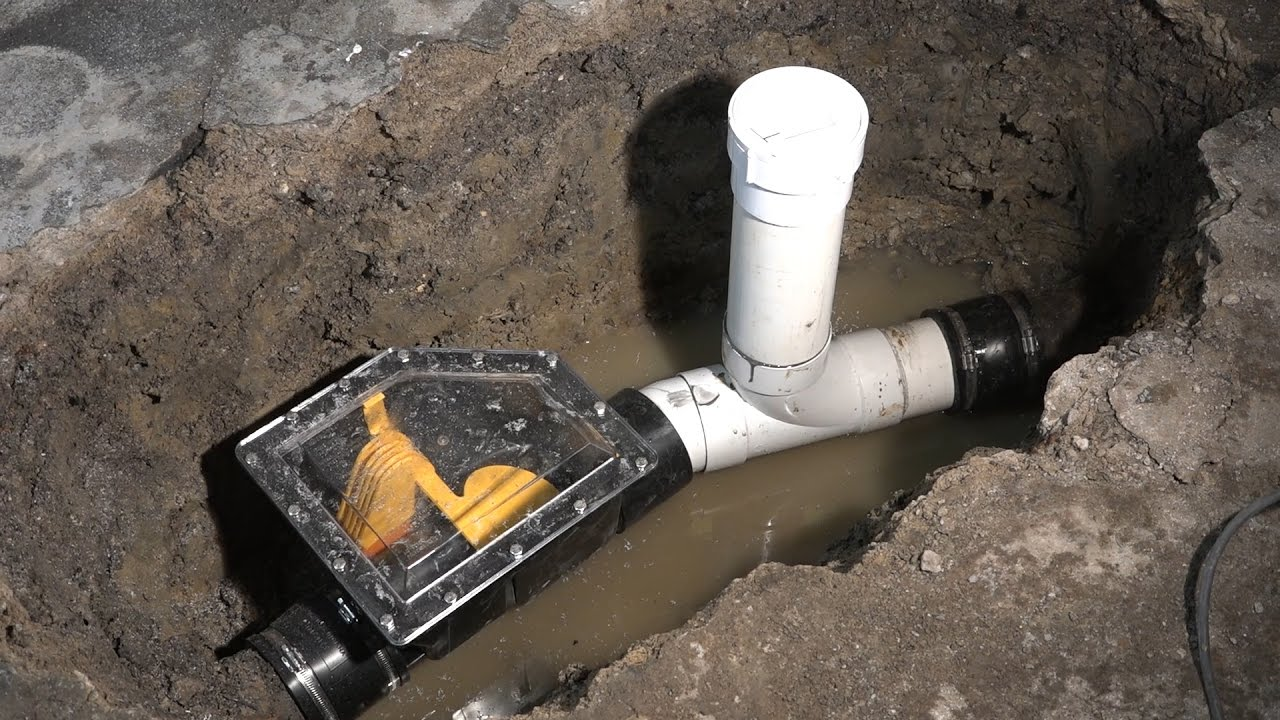
When one or more fixtures are cleansed at the same time, water might flow at various rates through each fixture. This causes an imbalance in the piping system, which can lead to water siphoning from traps in vulnerable fixtures. As a result of this situation, sewage gases may be sucked into the residence, a phenomenon known as “backflow.” Siphonage also raises the chance of unclean water backing up into a toilet bowl that hasn’t been flushed or a sink that has overflowed, posing health risks as well as causing water damage.
The swing check valve is the most frequent type of backwater valve. A hinged flap on the swing valve maintains a watertight seal until enough wastewater builds up to allow the valve to be opened. When wastewater levels drop, an internal spring mechanism closes the valve, making it capable of withstanding both positive and negative pressure from below and above, making it more effective than gravity-operated backwater valves. One or two valves regulate all drain lines going between fixtures and the main sewage line or septic tank in most basic home systems.
What is the Best Way to Tell Whether You Have a Backwater Valve?
If you have a backwater device, it is normally in the shape of a standard plug and is positioned near your house’s main cutoff. Water will not come out if you remove this stopper. Its aim is to keep undesired water out of your house when there is a problem with the city sewage mainline, during heavy rains, or while the municipal sewer system is being maintained, such as rodding the lines.
There may also be a backwater valve beneath the floor drain in the basement. Although this is not the desired site, it may be required for some applications if there are no other options.
The simplest approach to finding out if your house or company has a backwater device is to contact a certified plumber and have them inspect it. They’ll also determine whether you need a backwater valve and, if so, install one if you don’t already have one.
When a Backwater Valve Fails, What Causes It To Do So?
Neglect or defective design can cause backwater valves to fail. Older versions with metal springs rusted and lost their tension over time, rendering them useless and prone to failure. Corrosion can also form on the backflow valve’s interior components. Furthermore, plumbing clogs might lower wastewater flow volume, causing the main to overflow.
How Does a Backwater Valve Work?
The sewer system allows water and sewage to move out of your home. A backwater valve stops water or sewage from entering your property if the main sewer system gets overburdened. In most cases, you can look through the backwater valve access box’s translucent cover to see if it’s working properly.
The valve’s little flap is usually open, allowing water to exit your property. It also allows any sewage gasses to be vented. A little floating gadget is located on each side of the flap. When water or sewage begins to flow back into the house, these floaters cause the flap to rise and close, preventing anything from entering your home.
Gravity will permit the flap to open again as the water stops flowing back towards the house, allowing water and sewage to flow out of the house once more.
If this backwater valve is being put in an existing home rather than during construction, your town will require a plumbing permit. Cut a hole in the concrete floor close to the floor drain using a professional and competent plumber. They’ll dig down to the main sewage line, remove a part, and replace it with the new valve. The tops of these valves are normally transparent, allowing you to inspect them for proper operation. A removable cover is offered for easy cleaning.
Sewage may enter the basement through a floor drain, sinks, tubs, and toilets if a backwater valve is not properly adjusted and fitted.
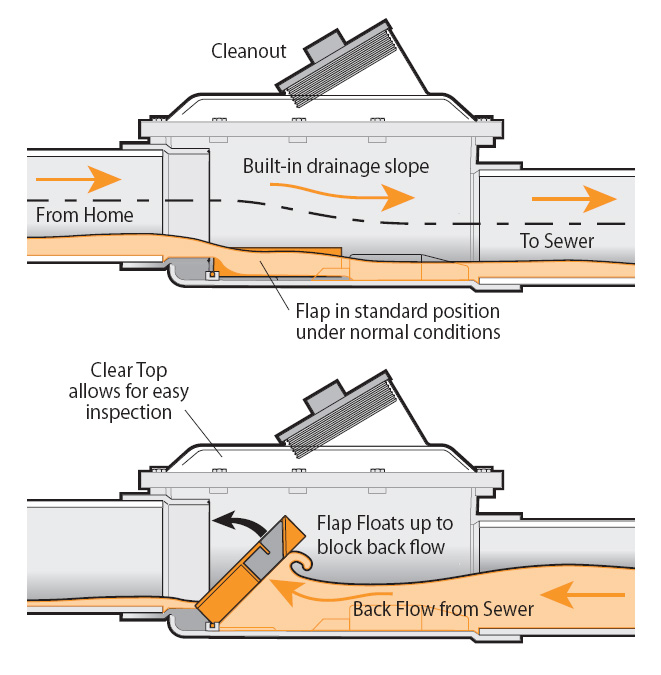
Backwater Valves Types
Backwater valves come in a variety of shapes and sizes. The following are some of the most prevalent types:
Disc Type Backwater Valve
This kind is put in solid walls and features a rotating disc that seals against a rubber gasket either by its own weight or by water flow pressing against it. It passes via an actuator, a sleeve that permits the valve’s size to be adjusted and offers pressure relief during periods of low use.
Swing Check Valve
This kind is made up of two half circles with flat sides that are guided by gravity, with steel balls on top rotating and opening during periods of heavy consumption, then swinging back over to block the flow when usage drops.
Lift Check Valve
This device is mounted in a pipe and opens using a lift during high flow periods. When it isn’t needed, it is raised by the wastewater flow and falls back owing to gravity.
Bellows Check Valve
This kind is also fitted in a pipe, but instead of expanding and contracting like an accordion as water passes through it, it expands and contracts like an accordion. It works in the same way, with a lift on top to allow wastewater to flow freely at all times.
Benefits of a Backwater Valve
A sewage backlog can result from a number of sources. A clogged pipe, tree roots, or other things might shut off the flow to your bathroom or kitchen. The primary benefit of placing a backwater valve in your home or construction is that it can help prevent flooding. Installing one may be worthwhile for the peace of mind that comes with knowing your property is safe.
Depending on where your belongings are located, your municipality may give a subsidy to help pay for the cost of installing a backwater valve. It’s also a good idea to check with your insurance company since some may provide backwater valve savings to homeowners and commercial property managers.
In essence, a backwater valve may save you time and money by preventing floods in your home or business. Flooding not only puts everyone on the premises in danger of becoming sick, but it may also ruin your house or building’s floors, walls, and furniture. Furthermore, any items stored in your basements, such as valuables, memories, or important files and documents, may be lost forever. A backwater valve is the best defense against this problem.
It’s important to remember that backwater valves are not a do-it-yourself project. It’s best to entrust the installation of a backwater valve to the professionals.
What is the Distinction Between a Check Valve and a Backwater Valve?
A check valve restricts flow in one direction, however, a backwater device can be opened during periods of high flow but closed when not in use to avoid backup in your house or business. When two sides of a pipe are utilized for distinct purposes, such as laundry vs. kitchen drains, check valves are typically put in pipes to block the return flow of water.
Check valves are often composed of rubber or plastic, whereas backwater devices are constructed of metal and are quite sturdy. Because check valves are driven open by the flow but must also close fully even during periods of low use, they wear out more quickly than backwater devices.
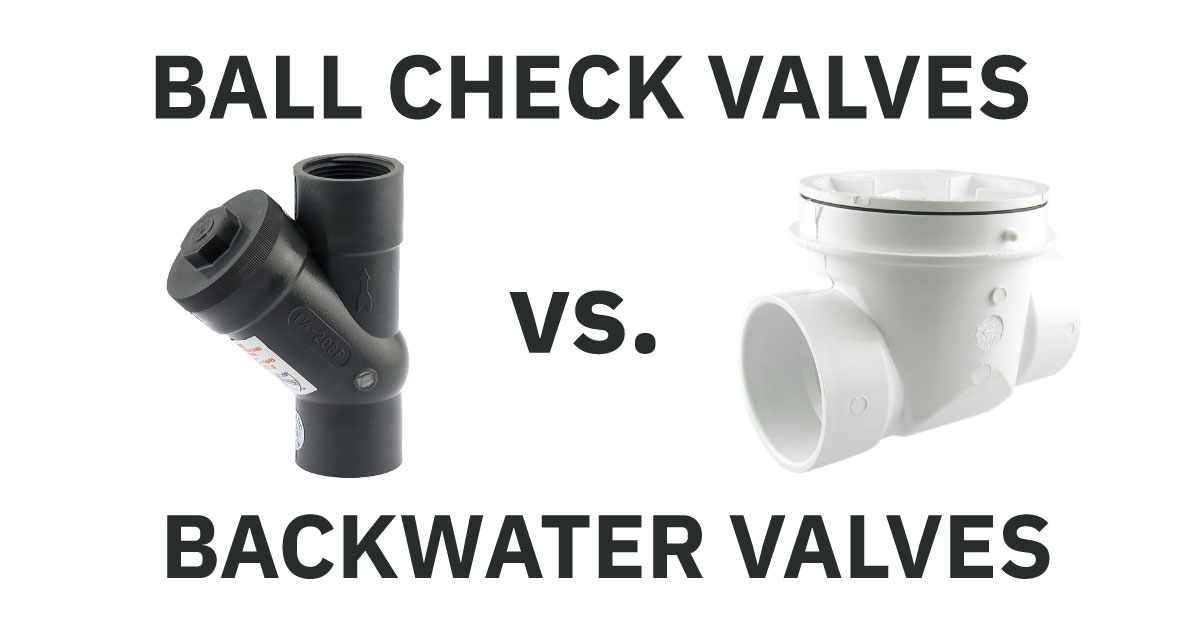
How are Backwater Valves Kept in Working Order?
The upkeep of a backwater valve is rather simple. Backwater valves are fairly basic devices with no moving components on the inside, so all they need is to be kept clear of impediments like corrosion or debris build-up. They should be examined for leaks, appropriate operation, corrosion, obstruction, and other issues on a regular basis and cleaned if necessary. A backwater valve can survive for decades without needing to be serviced, but regular checks are recommended to catch any problems early.
What is The Best Way to Clean a Backwater Valve?
If the valve requires cleaning in order to function correctly, you should get it done by a certified plumber. They’ll know what chemicals to use and in what order to clean them so that specific cleansers or strong chemicals don’t harm or corrode them.
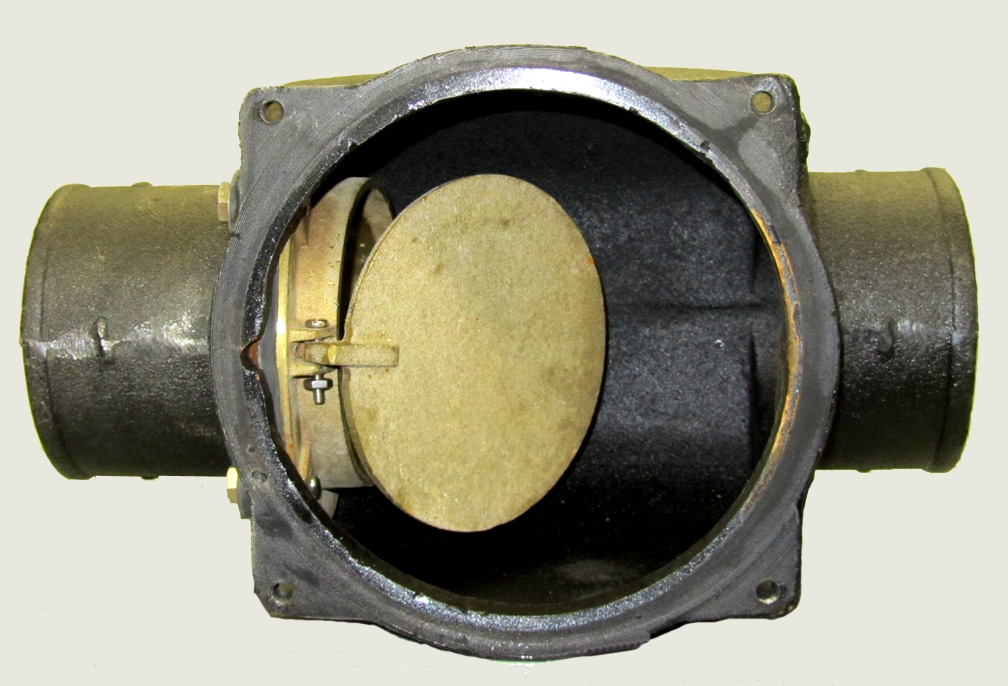
What Is The Procedure For Installing a Backwater Valve?
If you have a major problem with your sewer backup system, not all backwater valves will give the same amount of protection. You may have a backwater valve put appropriately on your main sewer line with the aid of a professional plumber.
It’s preferable to schedule backwater valve installation after any significant work is completed rather than trying to cram it in between tasks. Backwater valves are required to be installed on all properties linked to a sanitary sewage line, combined sewer system, or city sewer line in most towns.
Before insuring your house, your insurance company may require you to install a backwater valve in the sewer system. The current plumbing code mandates the installation of a backwater valve. If you’re thinking about getting house insurance, you should check with your agent first.
Backwater valves are often located on the basement floor. To get access to the plumbing system, the plumber will drill a hole in the concrete floor near the floor drains. In most cases, the plumber will need to detach downspouts in order to effectively access the foundation drains.
They’ll almost always be next to the sump pump. Look for a rectangular panel in a transparent container if you want to check if the backwater valve is working correctly or do routine maintenance. Open the panel to clean the circular cap and make sure the valve is operating properly. When doing routine maintenance on the sewage water piping system, wear gloves and protective eyewear.
How Much Does a Backwater Valve Installation Cost?
A backwater valve installation costs from $1500 to $3000 on average, which includes components, labor, equipment rental, and transportation. Several specialized crafts are involved, including pipelayers, pre-approved plumbers, and occasionally electricians. To understand more about Backwater Valve installation costs, watch this nice video.
FAQs about Backwater Valves
1. How do you know if you have a backwater valve?
Backwater valves are commonly found on the basement floor. If you know where your sump pump is, the backwater valve is most likely close by. There may be a rectangular panel on top, but the compartment itself is usually transparent, allowing you to see inside pretty simply and removing the spherical cap.
2. What is the purpose of a backwater valve?
A mainline backwater valve can assist prevent sewage from backing up into your basement due to an overcrowded main sewer line. The valve, which is installed directly into your basement’s sewer lateral, closes automatically if sewage backs up from the main sewer.
3. Is a backwater valve necessary?
If you have a backwater valve installed, sewage will not be able to flow back into your home if there is a sewer system backup. Some localities need backwater valves, while others advocate them. They can be built into new residences from the ground up or retrofitted into existing ones.
4. Where should a backwater valve be installed?
The backwater valve should be built beneath the floor of your basement, close to where the main sanitary sewage exits your home. Depending on where the city sewage lines are positioned, it can occasionally be found in your front or back yard.
5. Do most homes have a backwater valve?
One is less likely to be found in older dwellings. One may have been constructed into or retrofitted onto newer residences. Regardless of how old your house is, it is always a good idea to check. Start looking for the valve near your sump pump in your basement.
Buy Equipment or Ask for a Service
By using Linquip RFQ Service, you can expect to receive quotations from various suppliers across multiple industries and regions.
Click Here to Request a Quotation From Suppliers and Service Provider
Read More In Linquip
- How to Prevent Sewer Backflow Valve Problems?
- Backflow Preventer vs Check Valve: What’s the Difference?
- 5 Main Types of Isolation Valve
- 10 Types of Water Valves: The 2022 Ultimate Guide
- The 6 Best Tubeless Valve Stems in 2022
- What is Poppet Valve? Working Principle, Types & PDF
- What is Manifold Valve? With Function & Types
- What Is Linear Valve? With Example, Working Principles & Types
- What is Balancing Valve? Working Principles,Types & Function
- What Is Actuated Valve? Working Principle & Types
- What is Air Valve? Working Principles & Types (Clear Guide)
- What are Rotary Valves? Working Principles & Types
- 6 Types of Non Return Valve (Ultimate Guide)
- Best Pressure Reducing Valves of 2022

